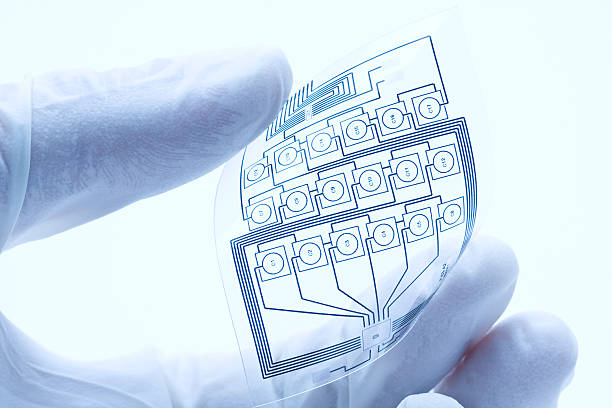lexible electronics is the idea of creating electronic devices that are not just able to be bent but also capable of stretching. These gadgets aren’t quite here yet, although we may see them emerge within the next few years. However, they already exist, and there are some incredible examples. A fantastic read
One example comes from Intel. It has created a prototype for a circuit board called a ‘stretchable conductor.’ The company says it could connect anything you want to any other device without cables. There could be several uses, including connecting your phone to your watch or your tablet to your laptop.
Another example comes from Samsung. They’ve developed a display that is so thin you can almost fit an entire newspaper into it. This means you can wrap the whole thing around you and read whatever you want. Of course, this could lead to many exciting applications. Imagine being able to read your morning paper while waiting in line to buy something.
The company says it could allow you to connect anything that you want to any other device without having to use cables. There could be a number of uses, including connecting your phone to your watch or your tablet to your laptop. Another example comes from Samsung. They’ve developed a display that is so thin you can almost fit an entire newspaper into it. This means you can wrap the whole thing around you and read whatever you want. Of course, this could lead to many exciting applications. Imagine being able to read your morning paper while waiting in line to buy something. Shop for repairing Mobile Screen.
On a slightly more technical level, Google’s Project Tango is a mobile platform that allows users to interact with their environment in 3D. The project started in 2012 as a research project at Stanford University and was later spun out of Google X (formerly known as the Advanced Technology And Projects group). At first, it aimed to create augmented reality apps that could overlay information about objects onto images taken by cameras on phones. But then things got a bit bigger when engineers realized they could use the technology to build new kinds of hardware devices. So far, there are several prototypes under development which include a robotic arm, a pair of smart glasses, and even a robot dog.
The world is going digital with its technology, and we cannot ignore the fact that everything has gone digital and flexible. Flexible Organic Light-Emitting Diode
We use smartphones, tablets, laptops, etc., but how do these things work? Here, I am telling you about the process through which they become functional.
Smartphones are made up of two parts, i.e., the display and the battery. When you click on a button, it lights up a LED inside the phone, and this makes the screen visible. In the same way, a laptop uses an LCD panel to show pictures or videos.
So, the next question is, where does the data come from? These electronic devices contain memory chips and RAM in the form of storage. The processor converts the commands received into electrical signals and sends them to the memory chip. If there is more than one processor, then the data will be sent to different processors at the same time.


